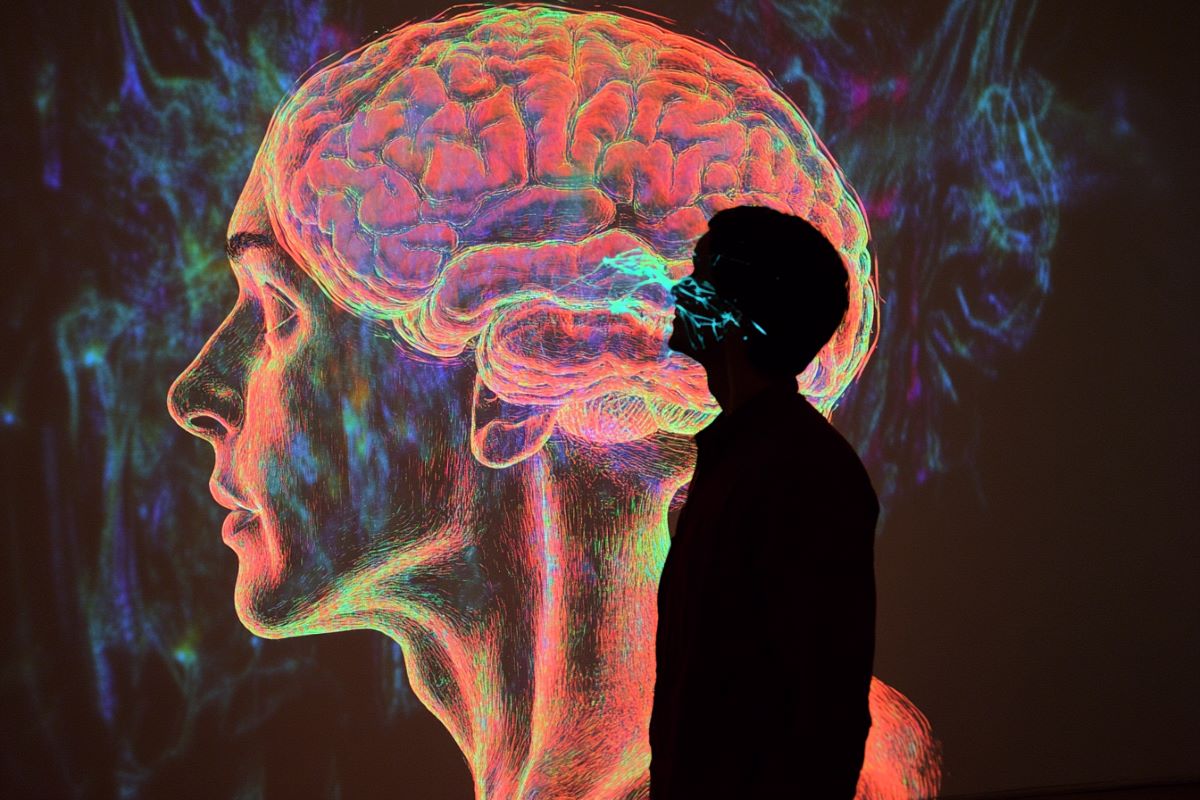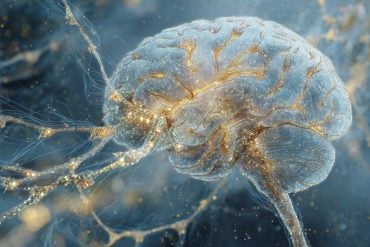Summary: A new study shows that the cerebral cortex acts as a “memory machine,” constantly detecting novel stimuli to refine its predictions of the future. By imaging the auditory cortex of mice, researchers found that neurons track sensory inputs over time, forming “echoes” that help distinguish new information.
A neural network model replicated these findings, showing that the brain’s wiring naturally supports novelty detection. This function is crucial for perception, learning, and decision-making and may explain why individuals with schizophrenia struggle to distinguish new from old information.
The findings highlight the role of neural networks, rather than single neurons, in novelty detection. This research advances understanding of both normal brain function and disorders where predictive processing goes awry.
Key Facts
- Neural Echoes: The cortex tracks sensory input using “echoes” of past stimuli, which help form short-term memories.
- Automatic Novelty Detection: Neural networks, rather than individual neurons, naturally detect new stimuli based on their wiring.
- Schizophrenia Insight: The findings may explain why people with schizophrenia struggle to differentiate new from old information.
Source: Columbia University
The cerebral cortex is the largest part of a mammal’s brain, and by some measures the most important. In humans in particular, it’s where most things happen—like perception, thinking, memory storage and decision-making.
One current hypothesis suggests that the cortex’s primary role is to predict what’s going to happen in the future by identifying and encoding new information it receives from the outside world and comparing it with what was expected to occur.

A new study published today in the journal Neuron takes a big step toward proving that hypothesis. The paper’s lead author is Yuriy Shymkiv, a postdoctoral fellow in the lab of Professor Rafael Yuste.
“We found that the cortex acts like a memory machine, encoding new experiences, and predicting the very near future,” Shymkiv said.
“This study gives a great deal of insight into the role of the cerebral cortex, and into diseases like schizophrenia where the cortex seems to be malfunctioning,” Yuste said, noting that it also helps clarify important processes in the normal brain.
“Novelty is the difference between what you predicted will happen and what actually occurred. This research shows that the cerebral cortex is continuously detecting novel stimuli, in order to change and improve its predictions of the future. Novelty detection is a critical function for humans and other animals.”
The team began their research by designing a study to identify how mice responded to a mix of familiar and new sensory stimuli. The stimuli in the experiment were sounds played at different pitches.
After imaging the auditory cortex of mice, a part of the cerebral cortex that processes sound, they found that groups of neurons responded not only to what sound was played, but also how novel it was.
Intriguingly, they found that each sound left a trail of neuronal activity, which they refer to as an “echo,” which tracked sensory inputs over time, and formed short-term memories of recent inputs.
These activity echoes not only made sure that every incoming stimulus led to a unique response, but also served to select stimuli that are new, resulting in those responses becoming much stronger.
To deepen their understanding of these findings, the team built a neural network model of the auditory cortex and trained it to detect stimuli that are new. It replicated what that they had seen in mice, showing that networks of neurons also used activity “echoes” to store a model of the environment, and used it to detect change. They concluded that the way the cortex is wired, with loops of connected neurons, makes novelty detection an automatic emergent property of the network.
“This is a leap forward in understanding how the brain does such a good job of detecting novelty,” said Yuste, noting that the model that Shymkiv created builds on the ideas of John Hopfield, who won the Nobel Prize last year for building neural network models and pioneering artificial intelligence.
The research also offers new insight on the primary role that the cerebral cortex plays in schizophrenia. Clinicians have known for many years that people with schizophrenia are not adept at distinguishing new information from old information.
Scientists tried to account for those findings by interpreting the behavior of individual neurons but ended up running into difficulties. One of this paper’s primary insights is its discovery that novelty detection isn’t the work of single neurons but of neural networks.
“We’re very excited that these findings can deepen our understanding of this crucial part of the brain and also potentially offer important insight into cases where those functions go wrong– and ways to fix it,” Yuste said.
About this neuroscience research news
Author: Christopher Shea
Source: Columbia University
Contact: Christopher Shea – Columbia University
Image: The image is credited to Neuroscience News
Original Research: Open access.
“Slow cortical dynamics generate context processing and novelty detection” by Yuriy Shymkiv et al. Neuron
Abstract
Slow cortical dynamics generate context processing and novelty detection
The cortex amplifies responses to novel stimuli while suppressing redundant ones. Novelty detection is necessary to efficiently process sensory information and build predictive models of the environment, and it is also altered in schizophrenia.
To investigate the circuit mechanisms underlying novelty detection, we used an auditory “oddball” paradigm and two-photon calcium imaging to measure responses to simple and complex stimuli across mouse auditory cortex. Stimulus statistics and complexity generated specific responses across auditory areas.
Neuronal ensembles reliably encoded auditory features and temporal context. Interestingly, stimulus-evoked population responses were particularly long lasting, reflecting stimulus history and affecting future responses.
These slow cortical dynamics encoded stimulus temporal context and generated stronger responses to novel stimuli.
Recurrent neural network models trained on the oddball task also exhibited slow network dynamics and recapitulated the biological data.
We conclude that the slow dynamics of recurrent cortical networks underlie processing and novelty detection.






